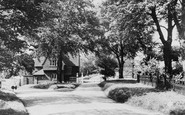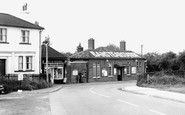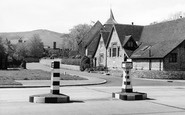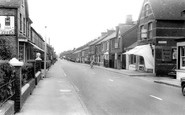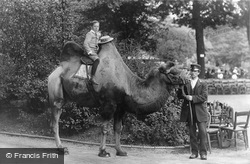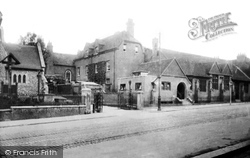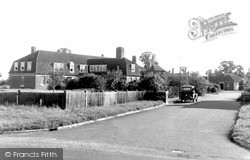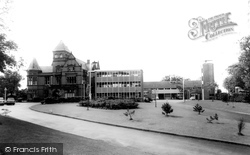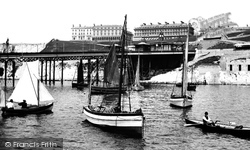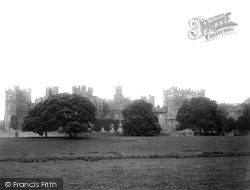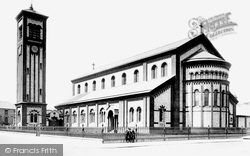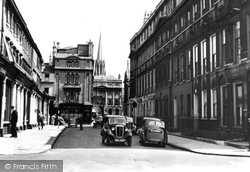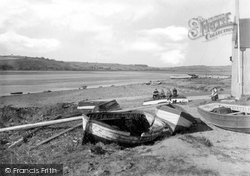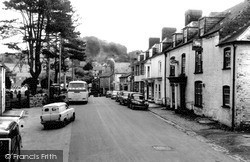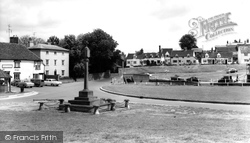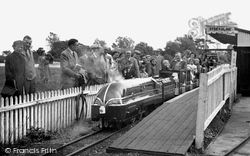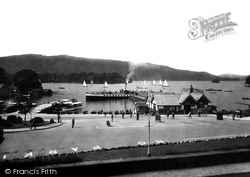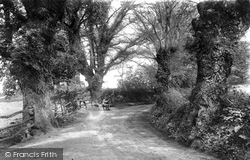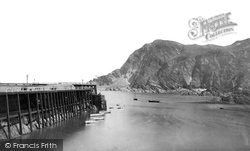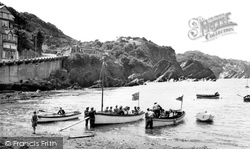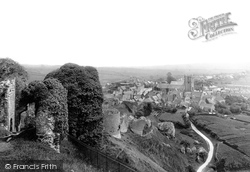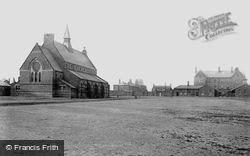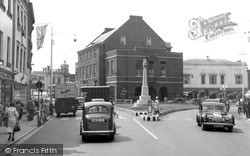Places
18 places found.
Those places high-lighted have photos. All locations may have maps, books and memories.
- Hythe, Kent
- Hythe, Hampshire
- Small Hythe, Kent
- Bablock Hythe, Oxfordshire
- Methwold Hythe, Norfolk
- Hythe, Somerset
- Hythe, Surrey
- Hythe End, Berkshire
- The Hythe, Essex
- Egham Hythe, Surrey
- West Hythe, Kent
- New Hythe, Kent
- Broad Street, Kent (near Hythe)
- Horn Street, Kent (near Hythe)
- Newbarn, Kent (near Hythe)
- Newington, Kent (near Hythe)
- Broad Street, Kent (near Hythe)
- Stone Hill, Kent (near Hythe)
Photos
360 photos found. Showing results 2,201 to 360.
Maps
101 maps found.
Books
10 books found. Showing results 2,641 to 10.
Memories
4,406 memories found. Showing results 1,101 to 1,110.
My Early Years
Going to the local school which was opposite the Church. The Headmistress Miss Griffin lived in the cottage attached to the school. We were all given a small amount of garden to cultivate and one of my jobs was to go on to the ...Read more
A memory of Aston Cantlow in 1954 by
Our Ladies High School 1950 1960
I was born in 1943 and lived in Wilmington. I initially went to an infant school in Oakfield Lane, however, my mother was told by the Sisters of Charity that they should pay for me to go to a Catholic school ...Read more
A memory of Dartford in 1950 by
Skipp Hitch
myself and ray and dave blakes were standing by st andrews church when the st trian coach came by the girls were waving their hockey sticks through the window i beleive it was shown in the film
A memory of Stanstead Abbotts by
Beecholme
My brother Alec (12) and I (11) were at Beecholme from January to December 1956 we were orphans our parents died 7 months apart in 1955. We were in myrtle cottage changed to Willow cottage by the childrens vote I choose Willow and was ...Read more
A memory of Banstead in 1956 by
2 Clutterbuck Rd
We moved to 2 Clutterbuck Rd in 1954 by the little grass island and moved out in 1965 to Methuen Way,great memories of playing around the estate, back fields community centre Corsham park and stone quarries,my friends lived nearby, ...Read more
A memory of Corsham in 1954 by
The Kidd's Alright
THE KIDD IS ALRIGHT The daylight had faded away and dusk was now dim enough to coax the streetlights to pop on, their vague orange light slowly getting brighter as their bulbs warmed. Meanwhile inside the Hamblett ...Read more
A memory of Moston in 1972 by
Carlton House
Jacqie. Carlton house stood at the junction of ledsham road & the a41 chester road.It was purchased by Cartwright Bros. a local builders & partly demolished. The stables & the music room/billiard room still exist ...Read more
A memory of Little Sutton by
I Do Remember This
I did not usually come in this way but the back way, over the park by the lido.
A memory of Solihull in 1965 by
Wannock Willingdon
We moved from Eastbourne to Wannock Lane, Willingdon in 1963 as my mother felt it would be a nice place for us to grow up at the foot of the Downs. It certainly was, Willingdon School fulfilled us academically & ...Read more
A memory of Willingdon in 1963 by
Cement Works Holborough Road
I too went to Holmesdale secondary, it was called Snodland Secondary when I first went there. My Dad and Grandfather, Peter and Henry Buss both worked as lorry drivers at the cement works and we lived in a factory house ...Read more
A memory of Snodland in 1964 by
Captions
4,899 captions found. Showing results 2,641 to 2,664.
The zoo opened at the north end of Regent's Park in 1828, and two years later the Royal Menagerie was added, to be joined by the animals which had formerly been kept at the Tower of London.
Although the 1839 hospital only consisted of the magnificent pedimented and columned centre block (on the left in this view) designed by local architect Henry Briant, it had expanded in similar stone wings by the
The old buildings in the foreground of the exterior view of the church were swept away and replaced by the well-designed Church Hall; in this view it has just had an extension completed, for its
It was opened by the Marquis of Bath on 23 July 1938. In the grounds on the right were cottages for the ambulance driver and the gardener.
Requisitioned by the National Fire Service during WWII, it was eventually bought for the Lancashire Brigade in 1949.
Hidden by the trees is St Peter's Church, believed to have been founded in 967.
The doors above the steps on the right were for many years used by the Leander Swimming Club.
In 1645 it was bought by the Vane family, who were Royalists.
Apparently transplanted from Romanesque Italy, this remarkable church in yellow and red brick was funded by the great-niece of the Duke of Wellington, Lady Victoria Wellesley.
As we look east from Queen Square, the terrace we see on the right, Northumberland Buildings, built in 1778, is another design by the ubiquitous Thomas Baldwin.
The lifeboat house was deemed necessary by the local authorities in view of the dangerous channels and sandbanks already noted.
The motor coach parked by the telephone box, is further evidence of the latter-day growth of tourism.
Designed in 1834 by the architect Beazley, this bizarre Gothic Revival structure was from 1903 until the 1960s the home of Studley College, founded by Frances, Countess of Warwick.
Later, it was owned by the Braddyll family, who did much reconstruction work before going bankrupt. Today, it is once again it is a religious house, but for the followers of Buddha.
The Fox (left) was owned by the now-defunct Dunmow Brewery. In 1999, the pub became famous for its pet chicken, Violet, who had allegedly been pecking at the war-memorial.
By the 1950s, the popularity of a cheap and cheerful holiday camp atmosphere brought thousands of visitors to camps like Wick Ferry each year.The model steam train was a popular attraction, as it
Part of the pier building is occupied by the Central Café, with a display of postcards on the front wall.
This lane leads down to the Flatford Mill complex, now owned by the National Trust.
A Bronze Age cist was unearthed here in the 1930s, and there is a major earthwork fort at the summit, which is thought to have been built by the Dumnonii in 300BC.
The lorry coming down the hill (left) is a sign of changing times; by the fifties most goods were being moved by road, and the ketches seen in photograph 63963 (p.73) were long gone.
He is commemorated by the parish church of St Edward the Martyr (centre right). Oliver Vye's Lane (lower right) runs below the ruined mediaeval towers of the Outer Bailey.
Only the church, which was known as the Garrison Church, remains, and it is now used by the police for storage. The other buildings were all demolished in the 1960s.
It was once the home of the Duke of Connaught, before being used by the Royal Army Chaplains Department.
Known as the Burmese War Memorial, it commemorates 19th-century battles fought by the Somerset Regiment, whose barracks were nearby.
Places (18)
Photos (360)
Memories (4406)
Books (10)
Maps (101)



